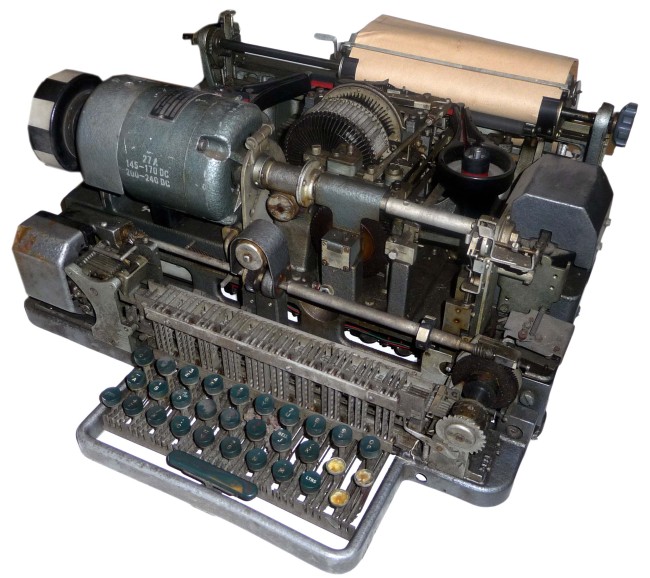Creed Model 7 Page Teleprinter
| Home > Browse Our Collection > Peripherals > Communications > Creed Model 7 Page Teleprinter |
|
The Creed model 7 page teleprinter, whilst not the first teleprinter to be produced by Creed it is, without doubt, the most well known of their machines, and is considered by many to be the teleprinter that helped the Allies to win World War 2. Many thousands of model 7’s saw service with the Armed Forces, sending vital messages around the world, and sending top secret messages to and from the code breaking teams at Bletchley Park in Buckinghamshire. Two types of paper carriage were provided, one suitable for printing on a tape, just like the model 3, and the other on a roll of paper. During its production life of 38 years, over 101,000 model 7’s were produced, in many different versions. The original version, the 7A, transmitted a 7½ unit character, (i.e., 1 Start unit, 5 Code units, and 1½ Stop units) and had a 7 unit receive cycle. However, a CCIT (Comite Consultatif Internationale Telegraphique) recommendation was that machines should be capable of correctly receiving and printing characters when each character is sent out as 7 equal units. That is, with a stop signal of only one unit, instead of the usual 1½ units. A re-design of the receive camshaft and its drive mechanism reduced the receive cycle to 6½ units, and with the original 7½ unit transmit cycle this machine became the famous model 7B. There was also a version with a 7 unit transmit cycle, still with the 6½ unit receive cycle, known as the model 7C. This machine tended to be used only on private wire networks where the shorter stop element produced a slightly higher throughput of information. This was equivalent to 71 words per minute for the model 7C at 50 Bauds, compared with 66 words per minute for the model 7B at 50 Bauds. The above details have been taken with thanks from the VMARS Newsletter Issue 31, 11 October 2003 from an article by Alan G Hobbs. The whole article can be seen at http://www.vmarsmanuals.co.uk/newsletter_articles/creed7b.pdf Manufacturer : Creed This exhibit has a reference ID of CH6198. Please quote this reference ID in any communication with the Centre for Computing History. |
|











